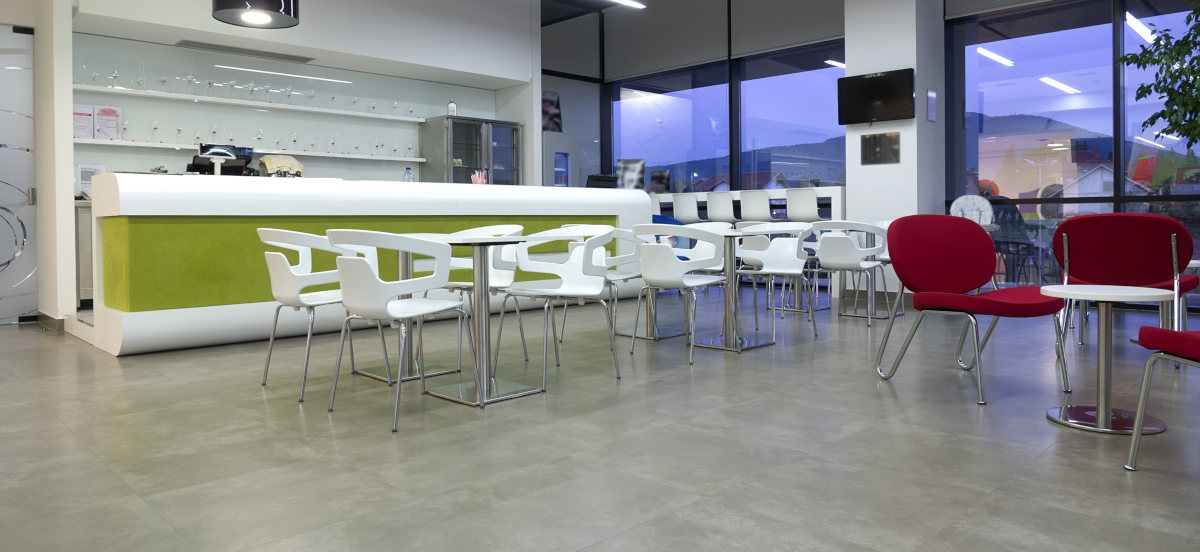A Manufacturer of Commercial Flooring Products
Research strategies determined marketing effectiveness and messaging refinements.

Our client, a privately held, US-based manufacturer of commercial flooring solutions, offers an innovative product line that includes broadloom and modular carpet, vinyl composition tile (VCT), premium rubber flooring, and hardwood products.
Company leadership hoped to influence the opinions of interior designers and architects by placing a stronger emphasis on the aesthetic qualities of its offerings (versus the company’s traditional focus on durability, price, sustainability, and customer service). The brand marketing team needed to determine if recent marketing efforts had successfully shifted perceptions among key audience groups and what, if any, messaging refinements were necessary.
To achieve its goals, the client commissioned Stamats to conduct a brand perception study. The research was designed to assess the company’s brand image, particularly as it related to product design and aesthetic considerations.
Stamats utilized the BUILDINGS database to send email invitations to architects and designers encouraging them to participate in the web survey. Stamats’ research team designed the survey instrument, captured 800 completed surveys with architects and designers, managed all related participant incentives, analyzed the results, and presented key findings to the client leadership team.
Findings pinpointed specific attributes that play a key role in the decision-making process for architects and designers responsible for specifying or purchasing flooring for commercial building projects.
With this information in-hand, the client was able to refine its marketing messages and improve overall brand perception. And since architects and designers exhibited important differences in flooring product familiarity and knowledge, Stamats’ marketing intelligence helped the client adapt differentiated tactics to enhance communication and engagement with each group. The findings also confirmed which marketing channels were best suited to reach each target audience.
-
The Challenge
Our client, a privately held, US-based manufacturer of commercial flooring solutions, offers an innovative product line that includes broadloom and modular carpet, vinyl composition tile (VCT), premium rubber flooring, and hardwood products.
Company leadership hoped to influence the opinions of interior designers and architects by placing a stronger emphasis on the aesthetic qualities of its offerings (versus the company’s traditional focus on durability, price, sustainability, and customer service). The brand marketing team needed to determine if recent marketing efforts had successfully shifted perceptions among key audience groups and what, if any, messaging refinements were necessary.
-
The Project
To achieve its goals, the client commissioned Stamats to conduct a brand perception study. The research was designed to assess the company’s brand image, particularly as it related to product design and aesthetic considerations.
Stamats utilized the BUILDINGS database to send email invitations to architects and designers encouraging them to participate in the web survey. Stamats’ research team designed the survey instrument, captured 800 completed surveys with architects and designers, managed all related participant incentives, analyzed the results, and presented key findings to the client leadership team.
-
The Results
Findings pinpointed specific attributes that play a key role in the decision-making process for architects and designers responsible for specifying or purchasing flooring for commercial building projects.
With this information in-hand, the client was able to refine its marketing messages and improve overall brand perception. And since architects and designers exhibited important differences in flooring product familiarity and knowledge, Stamats’ marketing intelligence helped the client adapt differentiated tactics to enhance communication and engagement with each group. The findings also confirmed which marketing channels were best suited to reach each target audience.


